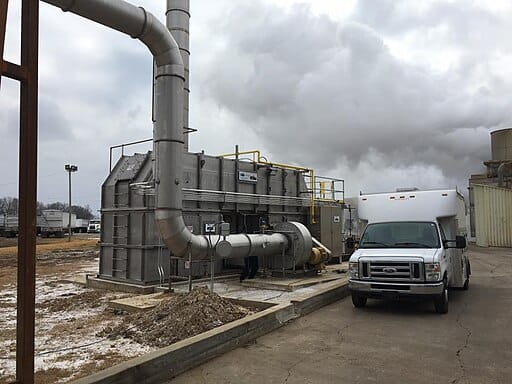LA Fire Victims Have Become ‘Dysregulated,’ Making it Hard to Focus and Make Decisions

Good morning. It's Friday, January 31, 2025, and in this morning's edition, we're covering Los Angeles fire victims living with emotional issues, the current U.S. president seeking to dismantle FEMA, Nurses at University Medical Center in New Orleans to strike during Super Bowl week and a whole lot more.
Media outlets and others featured in this edition: Inside Climate News, Louisiana Illuminator, Carolina Public Press, South Carolina Daily Gazette, Verite News, MultiState, Baltimore Banner, Arizona Mirror, Minnesota Reformer, State Court Report
To continue reading the rest of each article, please click the link at the end of the excerpt.
If you're a North Carolina resident and voted in the N.C. Supreme Court race that is still not certified, please check the list of over 60,000 votes that Jefferson Griffin is trying to discard after narrowly losing to Allison Riggs.
Stephen Whitlow from Triangle Blog Blog has more information. Readers can also visit the Orange County, N.C. group's website The Griffin List to search names and more.
For more about the GOP challenger, check out The Assembly’s article by Jeffrey Billman and Michael Hewlett.
A psychotherapist in Pasadena who was evacuated from her home says fire victims and most others in Los Angeles must begin by “re-finding a sense of safety” through connecting with others and taking care of basic needs like food and housing.
By Nina Dietz January 28, 2025
Cate Parker, a busy psychotherapist in Pasadena, California, has had a chaotic few weeks. Just as she was settling back into the post-holiday swing of things, she and many of her clients found themselves among the tens of thousands of people forced to evacuate as the Eaton Fire engulfed neighboring Altadena.
Parker has long had a special interest in working with climate anxiety and grief, and she was aware of the climate risks inherent to living in the fire-prone Los Angeles area. But she was still blindsided by the effects of the Eaton Fire, which broke out on Jan. 7, 2025.
Inside Climate News spoke with Parker a little over a week after the fires started. Though they haven’t reached her neighborhood and evacuation orders for her area have been lifted, over 100,000 Angelinos remain displaced and fires continue to rage across Los Angeles.
At the start of the interview, Parker struggled to find words for what she and her community have been through. She wants people to recognize that everyone in LA is impacted by this emotionally—not only those who are displaced—and she also took a moment to acknowledge her own anxiety and difficulty making sense of the situation.
“This feels like a full-circle career moment that I never wanted to have,” said Parker.
Parker used to work in climate change and renewable energy. But after taking a reading and writing seminar with Mary Annaïse Heglar—then writer-in-residence at the Earth Institute at Columbia University—on the emotional impacts of the climate crisis, Parker was inspired to pursue a master’s in clinical psychology from Antioch University Los Angeles. She eventually became an associate marriage and family therapist.
This interview has been edited for clarity and length.
NINA DIETZ: What advice would you offer to Angelinos who might not have access to mental health care?
CATE PARKER: There are many resources for free or low-cost therapy and body work for those impacted by the fires in Los Angeles. [Also called somatic work, body work is a form of therapy that operates on the principle that the mind and body are not separate, but are constantly influencing each other.]
DIETZ: How do you see these fires affecting mental health at the community level?
PARKER: There’s a whole community psychology part of [trauma] too. I’m not an expert on this, but I hope the disaster response teams and government are hiring the people who are.
I’ll say that it’s never been more apparent to me how important the ties we have with our community are. And it’s not just the ties with our own people, but also the fact that those people have ties with other people, and those people have ties with others and on and on. That’s how [many Angelenos] found short-term places to live. You need that human connection to find safety after something like this. Mutual aid has been such a vital part of the recovery in Altadena.
Get rid of FEMA? Trump-appointed group to look at shifting disaster response to states
By: Jennifer Shutt - January 27, 2025
WASHINGTON — Governors and state legislatures may have to bolster their natural disaster response and recovery efforts in the coming years as President Donald Trump looks for ways to shift the federal government’s role onto states.
Trump, who proposed doing away with the Federal Emergency Management Agency altogether last week, has since established a 20-member committee via executive order to review the agency and propose ways to overhaul its work.
The fate of the National Flood Insurance Program, managed by FEMA and relied on by more than 4.7 million homeowners, will also be up in the air as the process gets underway.
“I think, frankly, FEMA is not good,” Trump said in North Carolina on Friday. “I think when you have a problem like this, I think you want to go and — whether it’s a Democrat or a Republican governor, you want to use your state to fix it and not waste time calling FEMA.”
Trump said he planned to recommend that “FEMA go away and we pay directly — we pay a percentage to the state.”
“But the state should fix this,” Trump said. “If the state did this from the beginning, it would have been a lot better situation.”
‘Full-scale review’ for FEMA
Trump’s executive order states that “Americans deserve an immediate, effective, and impartial response to and recovery from disasters.”
“FEMA therefore requires a full-scale review, by individuals highly experienced at effective disaster response and recovery, who shall recommend to the President improvements or structural changes to promote the national interest and enable national resilience,” the executive order says.
Homeland Security Secretary Kristi Noem and Defense Secretary Pete Hegseth will co-chair the 20-member group. The White House did not respond to a question as to when Trump would name the other members.
The council is supposed to release a report later this year comparing FEMA’s response to various natural disasters with how the state affected by the emergency responded. The report is also expected to include how states responded to natural disasters before then-President Jimmy Carter signed in executive order in 1979 establishing FEMA.
U.S. House Speaker Mike Johnson said during a press conference Monday that he supports reviewing how FEMA operates, but he stopped short of eliminating the agency.
“In my experience, it is very often the case that local workers, people who are working through FEMA, do a pretty good job,” Johnson said. “But often, it’s the leadership at the top that can affect the outcome of how a disaster is handled.”
Johnson said no department or agency should be considered out of bounds for evaluation as Trump looks to “make the government more efficient and effective” and Republican lawmakers look for ways “to limit the size and scope of government.”
“FEMA has been a partner, but they probably could be a better partner,” Johnson said.
Let states run response
Republican U.S. Sen. Lindsey Graham said Monday that Trump’s preferred approach would be to let states run their own emergency response and be reimbursed with federal dollars.
“FEMA is frustrating at times,” Graham told reporters in Columbia, S.C. “I’d like to make it easier to help people with disaster relief.”
Graham expects anything that comes out of the study to land somewhere in the middle — not completely eliminating the federal agency but cutting through some of the red tape.
“If you want to look at FEMA, reshape FEMA, to make it more effective, count me in,” Graham said.
South Carolina Daily Gazette senior reporter Jessica Holdman contributed to this report.
Cities are dumping this chemical in NC rivers — and getting paid to do it
Is 1,4-dioxane dangerous? Opinions vary. But that hasn’t stopped cities from releasing the chemical into the drinking water of communities.
by Jane Winik Sartwell January 28, 2025
Three central North Carolina municipalities in 2024 fought — and won — for their right to release a potentially toxic chemical into the drinking water of communities.
Now, those cities — Asheboro, Greensboro and Reidsville — are taking full advantage of the court’s decision, dumping massive amounts of an odorless, colorless industrial solvent known as 1,4-dioxane into the Haw and Deep Rivers, which meet at the mouth of the Cape Fear River.
For them, it’s big business. Manufacturing companies pay them to take their waste — chock full of 1,4-dioxane — so it can be processed and discharged.
But that cash flow comes with a potential cost. A very human cost.
Toxic or not?
Does 1,4-dioxane pose a danger to people? Opinions vary.
The chemical is a byproduct generated in the production of plastics, laundry detergent, antifreeze and shampoo.
Studies have shown that exposure to it may be deadly. But the U.S. Environmental Protection Agency hasn’t gone that far just yet.
The EPA classifies 1,4-dioxane as a “likely human carcinogen.” Short-term exposure may cause eye, nose and throat irritation. Long-term exposure may lead to kidney and liver damage.
Animal studies showed increased instances of nasal, liver and gall bladder tumors after 1,4-dioxane exposure, according to the EPA. The agency says the chemical “presents an unreasonable risk of injury to human health.”
Judge Donald van der Vaart, in siding with Asheboro, Greensboro and Reidsville being allowed to dump 1,4-dioxane into the Cape Fear watershed, noted the EPA’s cautious view in arriving at his decision.
“The EPA has characterized 1,4-dioxane as ‘likely to be carcinogenic to humans,’” van der Vaart wrote in the ruling. “The EPA has not characterized 1,4-dioxane as ‘carcinogenic to humans.’”
Ebb and flow
The N.C. Department of Environmental Quality issued permits under the Clean Water Act as a way to control the chemical’s scope. It’s a method regularly used to limit discharges of other toxic substances such as PFAS, more commonly known as “forever chemicals.”
But instead of limiting the discharges, Asheboro, whose officials didn’t respond to an interview request, sued in 2024 to keep dumping. And won.




